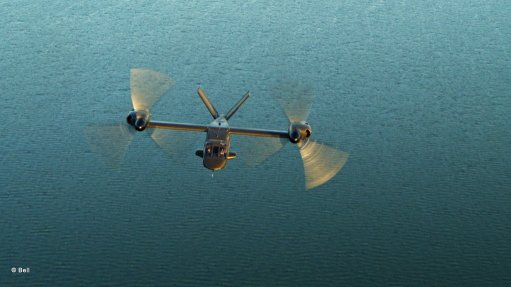
A Bell V-280 Valor tiltrotor, in horizontal flight configuration
Photo by: Bell
The global military rotorcraft market will increase in value by nearly 50% over the next decade, international data and analytics group GlobalData has forecast. In its latest report, 'Global Military Rotorcraft Market – 2023-2033', it predicts that the value of this market will rise, from the current $19.6-billion, to $28.4-billion in 2033, representing a compound annual growth rate of some 3.8%. (The term rotorcraft embraces both tiltrotors and helicopters.)
This increase is being impelled by major new rotorcraft acquisition projects that have been, or are being, launched by leading military powers. The largest of these is the US Army’s Future Long-Range Assault Aircraft programme, under which it will replace its current Sikorsky UH-60 Blackhawk helicopters with Bell V-280 Valor tiltrotors. In Europe, France, Germany, Italy, Greece, the Netherlands and the UK have signed a memorandum of understanding to develop a new medium-lift helicopter under the Next-Generation Rotorcraft Capabilities project.
India has been and is developing and taking into service a series of locally-designed and -built helicopters, including the Light Combat Helicopter, the Light Utility Helicopter and the Indian Multirole Helicopter. South Korea and Turkey are two examples of countries seeking to indigenise helicopter design and manufacturing capabilities, through international partnerships and technology transfer agreements.
“Increasing geopolitical tensions and regional conflicts have forced countries to raise their budgetary allocations for helicopter procurements,” pointed out GlobalData aerospace and defence analyst Chandan Kumar Nayak. “The armed forces are also considering the integration of emerging technologies that would enable them to conduct missions more proficiently. Countries such as the US and China are already developing technologies that leverage artificial intelligence to reduce the workloads of pilots and assist them with decision-making during missions. Similarly, the adoption of hybrid propulsion systems is also being considered for next-generation military helicopters to improve flight performance. With these technological advancements, future military rotorcraft are expected to provide superior flight performance and attack capabilities.”
Around the world, militaries are seeking to acquire rotorcraft that have modern technologies and multirole capabilities. The largest segment of the rotorcraft market over the next decade will be that of transport and utility helicopters. This is because of the growing demand from armed forces for aircraft for logistics and supply missions.